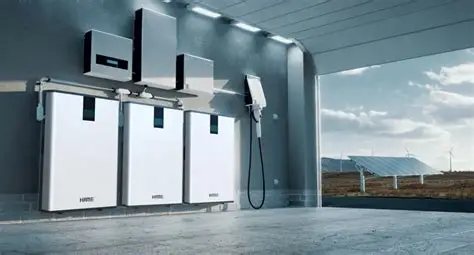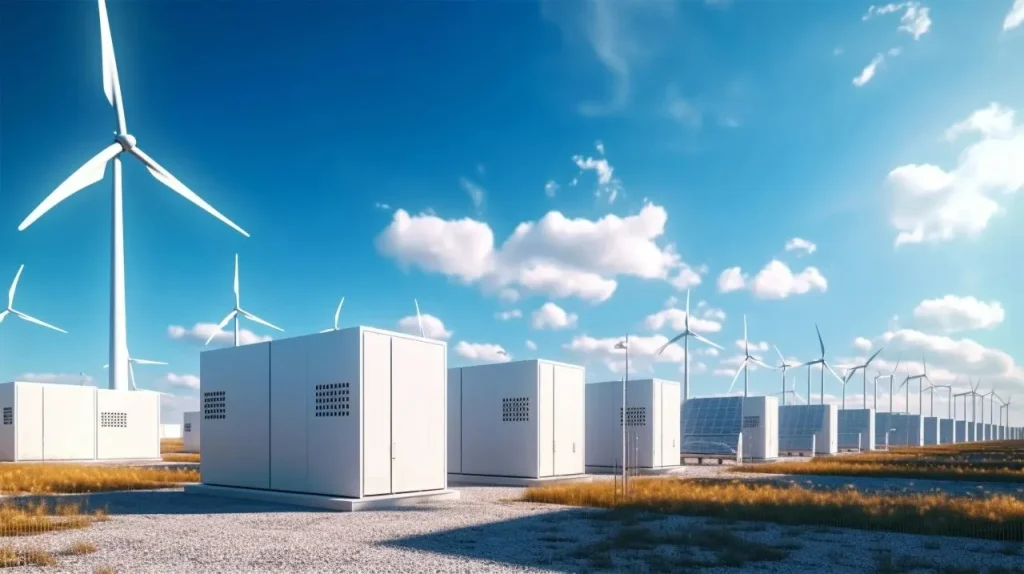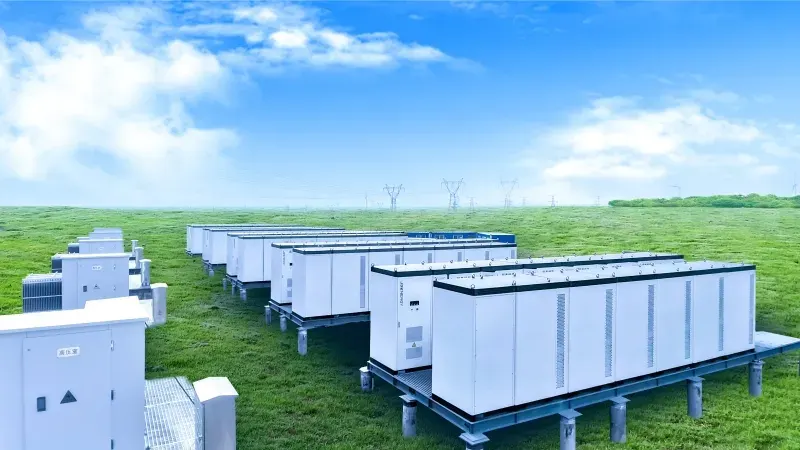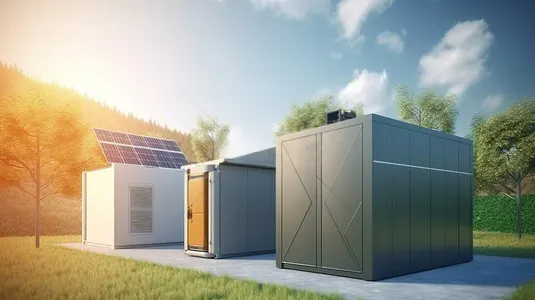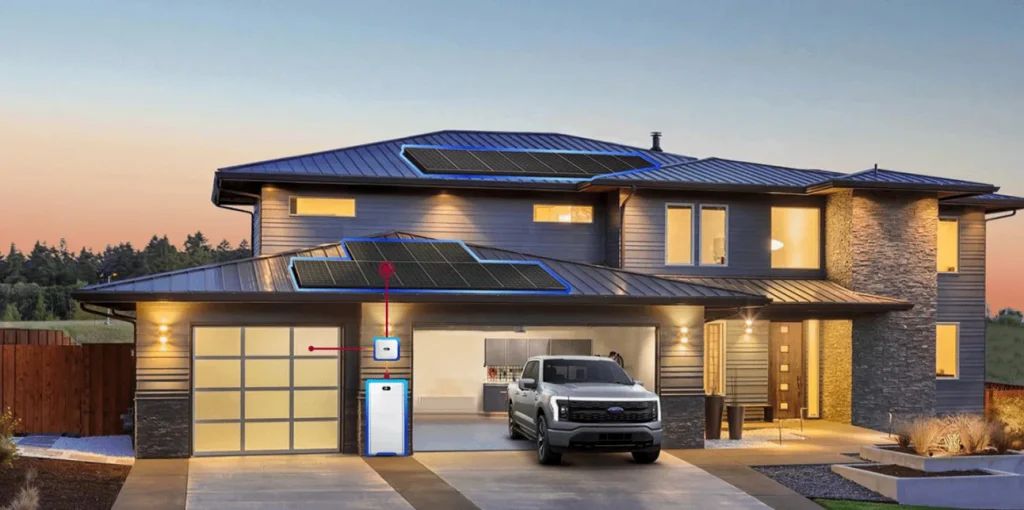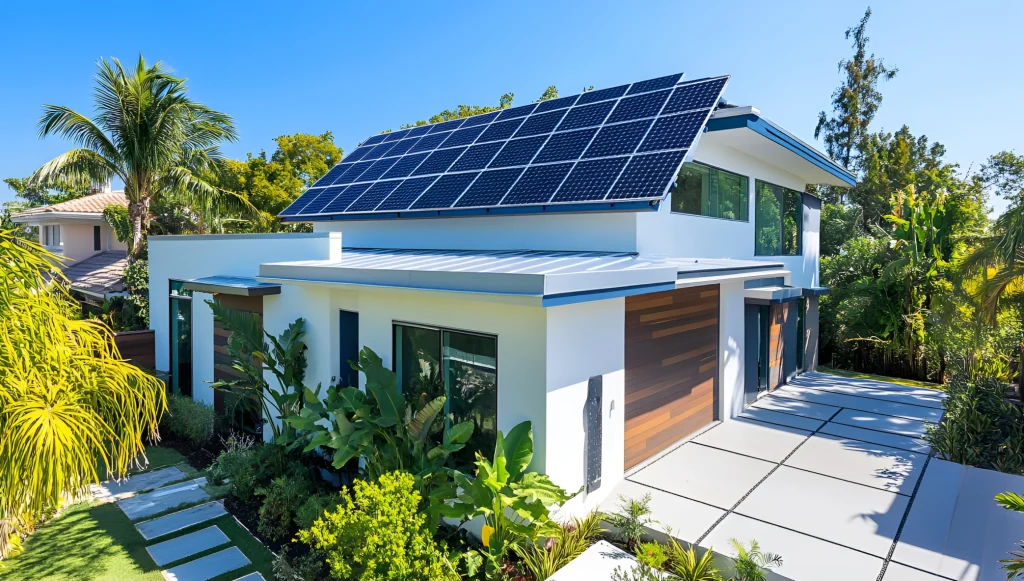I. First, let’s talk about the “persistent headaches” with energy storage batteries—have you encountered them too?
These issues all boil down to four core needs for energy storage batteries: lifespan, safety, expandability, and easy installation.
The energy storage battery we’re discussing today addresses all four pain points: it lasts over 5 years, comes with a “smart protection manager,” allows capacity expansion via parallel-connected modules, and is compact enough to fit in any small corner. Next, let’s break down its practical benefits using real-life scenarios.
II. 5-Year Lifespan Isn’t a “Gimmick”—It Saves You from “Repeated Spending”
1. Why Does a “5+ Year Lifespan” Matter So Much for Energy Storage Users?
For most people, buying an energy storage battery isn’t a “one-time purchase”—it’s a “long-term investment.” For example, homeowners install solar panels with storage to use self-generated electricity at night and cut utility bills; store owners rely on it to prevent food spoilage in fridges or POS system outages during power cuts. If a battery degrades to less than 50% capacity in just 2-3 years, you either put up with weak performance or spend thousands on a replacement—wiping out any savings you initially gained.
This battery’s 5+ year lifespan guarantee stems from optimized materials and craftsmanship. Its electrodes use high-purity lithium alloy to reduce wear during charging/discharging; the case features moisture-sealed design, protecting internal components from southern China’s rainy seasons or northern China’s dry climates; even its charge-discharge cycle count has been tested—under normal use, degradation is kept below 20% in 5 years. In other words, it retains over 80% of its capacity after 5 years, eliminating frequent replacements.
2. Real Case: Mr. Zhang’s “5-Year No-Replacement” Experience
Mr. Zhang lives in Hangzhou with a balcony-equipped apartment. He installed solar panels in 2020 and chose this energy storage battery. He told me: “I was worried about lifespan at first—after all, the small batteries I bought before only lasted 2 years. But now, nearly 4 years later, the battery’s runtime is still almost the same as when I bought it, even with air conditioning in summer and heating in winter. I asked the manufacturer last year, and they said it’ll work perfectly for another 1-2 years at the current degradation rate.”
For him, 5 years without replacement isn’t just about saving nearly 10,000 yuan on a new battery—it also avoids the hassle of “removing old equipment and installing new ones.” Traditional battery replacements require disconnecting wires, moving heavy old batteries, and reconfiguring the system, taking half a day. This battery lets him skip all that trouble.
III. Built-In BMS: A “Smart Manager” for Dual Protection—Safety and Durability
1. What Is BMS, and How Does It Help You?
Many people only focus on capacity and lifespan when buying energy storage batteries, but they overlook “safety protection”—in fact, safety is the bottom line for any battery. The “built-in BMS” (short for Battery Management System) in this battery acts like a 24/7 “smart manager,” constantly monitoring the battery’s operation and keeping it within safe parameters.
Specifically, the BMS tracks three key areas:
- Voltage Monitoring: Prevents overcharging (e.g., when solar panels generate excess power, overcharging can cause battery swelling) or deep discharging (forcing discharge when the battery is dead damages electrodes);
- Temperature Control: Batteries heat up easily during charging in summer—when temperatures exceed 45°C, the BMS automatically reduces power output. In winter, when temperatures drop below 0°C, it adjusts charging current to prevent freezing damage;
- Current Protection: In case of short circuits or leakage, the BMS instantly cuts off the circuit to avoid fires or electric shocks.
2. What’s the Real Gap Between Batteries With and Without BMS?
I once helped a neighbor troubleshoot a cheap energy storage battery without built-in BMS—it failed after just 6 months. On a summer afternoon, excess solar power overcharged the battery to 100%, and without protection, it swelled up. Luckily, we noticed it in time to avoid a fire. When we contacted the manufacturer, they even blamed it on “user overcharging”—that’s the risk of BMS-free batteries.
In contrast, this BMS-equipped battery “brakes automatically” even if you forget to turn it off or sudden power loads spike. For example, if a store owner forgets to switch off the battery after closing, the BMS stops discharging once the battery drops to 20% capacity. During thunderstorms, if voltage fluctuates, the BMS disconnects the battery first to protect internal components.
IV. Parallel Expandability: No Need to “Replace the Entire System” for More Capacity—Adapt to Changing Power Needs
1. Why Does “Expandability” Matter for Energy Storage Users?
Power needs aren’t static: a family might start with solar panels and later add an electric vehicle, requiring more storage; a store might begin with just a fridge and cash register, then add air conditioners and display cabinets, doubling power usage. Without expandability, you’d have to sell the old battery and buy an entirely new larger system—wasting money and creating hassle.
This battery’s solution is simple: it supports “parallel-connected expansion packs.” You can start with 1-2 modules for daily use; when power needs grow, just add more modules and connect them in parallel with the existing battery—no rewiring or inverter replacement required. Each module has standardized capacity: for example, one module stores 2 kWh, so adding two modules increases storage by 4 kWh. You can expand as much as you need.
2. Real Experience: A Convenience Store Owner Upgraded from 2 kWh to 6 kWh in 1 Hour
Boss Li runs a convenience store in a residential area. When he first installed this battery, he only bought one 2 kWh module—mainly to keep his fridge from thawing during power cuts. But when summer arrived, he added two air conditioners and found the original battery insufficient: during outages, the AC only ran for 1 hour, which didn’t keep customers cool and hurt business.
He contacted the manufacturer, bought two more 2 kWh expansion modules, and the technician finished installation in just 1 hour: connecting the positive and negative terminals of the new modules to the existing battery in parallel, then calibrating the BMS (to ensure all modules work together). Now, during power cuts, the AC runs for 3 hours, the fridge stays cold, and customers are willing to linger longer—boosting sales.
V. Compact & Easy Installation: Fits Small Spaces, Cuts Maintenance by Half Compared to Traditional Batteries
1. Compact Design: Fits on Balconies, in Storage Rooms, or Store Corners
Traditional energy storage batteries are either cabinet-sized or bulky multi-battery setups that take up too much space. For example, some homeowners want to install them on balconies but end up losing space for laundry; some store owners try to place them near cash registers but find them too wide to walk around.
This battery’s compact size changes that: a single module is roughly the size of a microwave, less than 20 cm thick, and lightweight enough for one adult to carry. Homeowners can mount it on balcony walls or tuck it in a storage room corner; store owners can place it under cash registers, next to shelves, or even beside outdoor AC units—it doesn’t occupy main space and blends naturally with its surroundings.
2. Easy Installation: No “Major Work”—Technicians Finish in 1-2 Hours
Installing traditional energy storage batteries is a hassle: it requires drilling multiple holes, running thick wires, and reconfiguring inverter settings, often taking 2-3 technicians a full day. This battery’s installation process is simplified:
- For wall mounting: Technicians only drill 4 holes to fix the bracket, then hang the battery;
- For floor placement: Just set it on a flat surface, connect two wires (positive to the inverter, negative to ground), and pair it with the BMS via a mobile app—then it’s ready to use.
When my neighbor had it installed, the technician finished everything (including calibration) in 1.5 hours. He said: “Installing other batteries before left dust everywhere, and I had to stay home to supervise. This time, the technician brought minimal tools, cleaned up the trash afterward, and it was so hassle-free.”
3. Easy Maintenance: No Frequent Checks—App Alerts You to Issues
Maintaining traditional energy storage batteries is tedious: regular dusting, voltage testing, wire checks, and professional service calls cost hundreds of yuan annually. This battery’s maintenance is simple:
- Its dustproof and waterproof case needs no wiping, even in rain;
- The BMS monitors the battery in real time and sends alerts via mobile app for issues like “battery overheating” or “loose module connection”—no manual checks needed;
- The manufacturer offers a 5-year warranty—if quality issues arise, technicians visit for repairs, so you don’t have to move the battery.
Mr. Zhang shared: “I’ve used it for nearly 4 years, and only got one app alert in the second year: ‘loose battery wiring.’ I contacted the manufacturer, and the technician fixed it the same day for free—way easier than maintaining traditional batteries.”
VI. Who Is This Energy Storage Battery Perfect For? Don’t Miss It If You’re in These 3 Groups
1. Home Solar Users: Fits Balconies/Storage Rooms, No Replacement for 5 Years
If you have solar panels at home, want to store electricity for night use, and worry about space or short lifespan, this battery is ideal. For small balconies, wall mounting leaves laundry space; its 5+ year lifespan matches solar panels (typically 10+ years), so no mid-term replacements are needed.
2. Small Business Owners: Handles Power Cuts, Expandable Capacity
Convenience stores, small supermarkets, and barbershops don’t use massive power, but outages hurt business. This battery’s compact size fits near cash registers; if you add ACs or fridges later, just expand with parallel modules—no full system replacement.
3. Outdoor Temporary Power Users: Portable, Easy to Install, Safe & Reliable
For temporary sites like construction dormitories or outdoor camping grounds that need storage, this battery is perfect. It’s lightweight enough for two people to carry; the built-in BMS protects it from high outdoor temperatures or rain, so you can use it with confidence.
VII. Compared to Traditional Energy Storage Batteries: Where Does This One Excel in “Cost-Effectiveness”?
Many people think “long-life, BMS-equipped batteries must be expensive,” but when you calculate long-term costs, it’s actually more cost-effective. Let’s compare it to traditional energy storage batteries:
| Comparison Category | This Energy Storage Battery | Traditional Energy Storage Batteries |
| Lifespan | 5+ years, ≤20% degradation | 2-3 years, ≥40% degradation |
| Safety Protection | Built-in BMS (overcharge/overdischarge/overtemperature protection) | Most lack BMS, rely on external fuses |
| Expandability | Parallel expansion (add modules only) | Non-expandable (full system replacement needed) |
| Installation & Maintenance Cost | 1-2 hours installation, low maintenance for 5 years | 1-day installation, hundreds of yuan in annual maintenance |
| 5-Year Total Cost | One-time purchase (≈6,000 yuan) + no maintenance fees | 2-3 replacements (≈9,000 yuan) + 1,500 yuan in maintenance |
For example, over 5 years, traditional batteries cost around 10,500 yuan (two purchases: 5,000 + 4,000 yuan + 1,500 yuan maintenance); this battery costs just 6,000 yuan (one purchase + no maintenance)—saving 4,500 yuan. That’s the key to its “cost-effectiveness”: it’s not cheap upfront, but it saves money and hassle in the long run.
VIII. Final Summary: When Choosing an Energy Storage Battery, Don’t Just Focus on Capacity—These 4 Factors Matter More
If you’re shopping for an energy storage battery, don’t fixate only on “how many kWh it stores.” Instead, prioritize “how long it lasts, how safe it is, how easy it is to expand, and how simple it is to install”—these four factors determine your long-term experience.
This battery excels in all four areas: its 5+ year lifespan saves replacement costs, built-in BMS avoids safety risks, parallel expansion adapts to growing needs, and compact design fits small spaces. Whether you’re a homeowner, small business owner, or need temporary outdoor power, if you want to avoid the hassle of “replacing, installing, and repairing batteries,” this one is worth trying.
If you have questions—like “How many modules do I need for my 3kW solar system?” or “What capacity do I need to power ACs during store outages?”—contact the manufacturer’s customer service directly. They’ll recommend a solution based on your power needs—after all, the best choice is the one that fits you.


